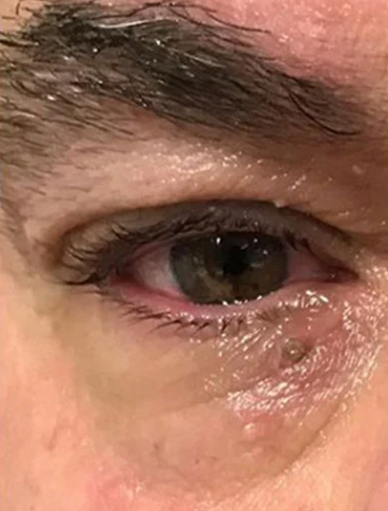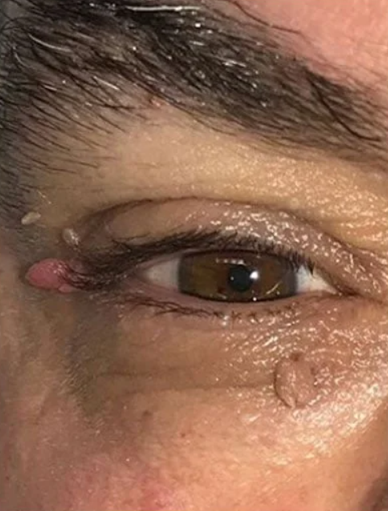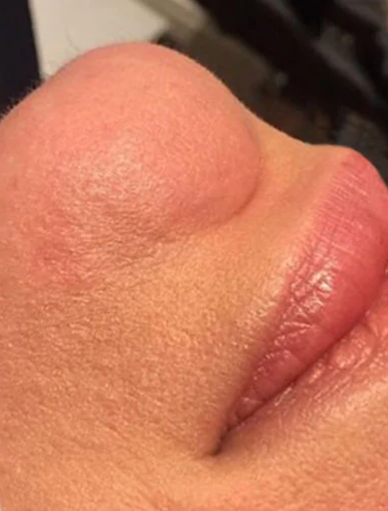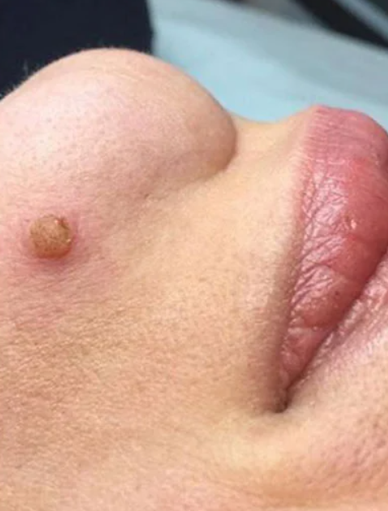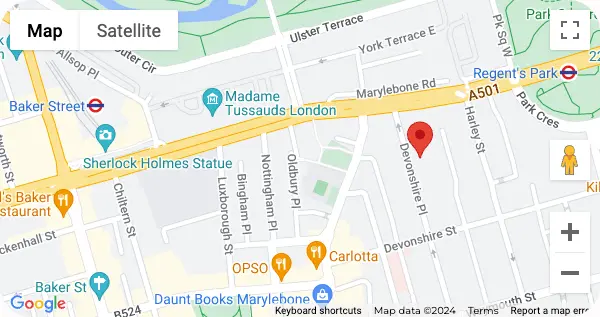Summary
- Warning signs of moles that need to be checked are new, changing, uneven, itchy, bleeding or painful moles.
- Always use the ABCDE rule when checking. If the mole is Asymmetrical, has an irregular Border, changes in Colour, is bigger in Diameter, or is Evolving.
- Do a self-check monthly and see a dermatologist annually if you are at higher risk.
- See a dermatologist is unsure about having an abnormal mole.
- The earlier suspicious mole is detected, the earlier it can save you from future risks.
Why Checking Moles Matters
Moles are benign accumulation of pigmented cells are usually not a cause of concern. But some moles can turn into melanoma, a serious type of skin cancer. About 16,700 people in the UK are diagnosed with melanoma every year according to Cancer Research UK.
The NHS notes that spotting changes early could be the difference of a simple and easy treatment or something more concerning. Regular checks also help you learn what is normal for your skin, so it is easier to notice small changes.
When to See a Doctor About a Mole
Not all unusual looking moles are harmful, but some changes should never be ignored. If you spot any of these signs, book an appointment with your GP or dermatologist.
Colour changes
Normal moles are usually one even shade of brown. Check if your moles have multiple colours (black, red, grey, blue) or uneven colour with one side darker.
Getting bigger
Size is one of the key warning signs. If the mole is larger than 6 mm like the size of the pencil eraser, or if it is growing fast, it needs to be checked by a doctor.
Shape changes
The shape of a healthy moles tend to be round or oval with distinct edges. Signs like irregular, uneven borders or asymmetrical shape needs a proper checking.
Learn more about our mole removal options.
The ABCDE Rule
Here is a simple and effective guide you can follow at home:
- Asymmetry (A): Both sides of the mole do not match or do not look alike.
- Border (B): The edges are uneven instead of smooth.
- Colour (C): The mole has different shades of colours.
- Diameter (D): Larger than the size of a pencil eraser, about 6 mm.
- E – Evolving: The mole is changing or evolving in size, shape or looking different from before.
This rule is simple enough for monthly self-checks but also trusted by doctors. Using this regularly helps you notice changes early, when treatment is easiest.
Effective & professional doctor-led When to Get Moles Checked at our central London clinic
Verified Before & After
Verified Before & After
How Frequently Should You Check Your Moles?
Monthly Self-Checks
Here is how you do self-check your skin once a month:
- Stand in front of a full mirror with good light to see your skin clearly.
- For hard to see spots like back and under arms, use a hand held mirror.
- Ask someone to check areas like your scalp or behind your ears.
Yearly Professional Check-Ups
If you are at higher risk, it is a good idea to have a dermatologist to annually check you. You may be higher risk if you have:
- 50 or more moles
- Unusual looking moles
- A family history of melanoma
- Previous skin cancer
- Very fair skin that burns or freckles easily
- A history of using sunbeds or having bad sunburns
Doctors may suggest mole mapping in these cases, where photos of your skin are taken and compared over time to spot changes.
Find out about mole mapping in London.
At-Home vs. Professional Mole Checks
At-Home Checks
Doing your own checks help you to:
- Get to know what is normal for your skin
- Spot changes quickly
- Check regularly for free and with little effort
Some apps let you take photos to track mole changes, but remember, these are only tools. They do not replace professional medical advice.
Professional Checks
At a GP or dermatologist appointment, you may get:
- A full skin check
- A dermascope exam, where a special magnifying light is used to see details.
- Your family and medical history
- A referral if you need a specialist check.
For suspected melanoma, the target is to be seen by a dermatologist within two weeks.
To find out more, book a Private GP Appointment.
What To Expect On a Doctor Visit
- Your doctor will get your medical and family history of skin cancer, if any, ask about your exposure to the sun, or use of sunbeds.
- They will also use a dermascope to examine the colour and pattern of your mole.
- Pictures may be taken for mole mapping to compare with future visits, especially if you have many moles.
- If the mole appears suspicious, part or all of it may be removed for biopsy.
Types of Biopsies
- Punch biopsy: Excision of a round portion of the skin.
- Excision: The entire mole and a little surrounding skin are removed during this technique.
- Shave biopsy: The mole is shaved off at the top.
Discover our Top 5 Mole Removal Methods: Safe & Effective Options
Prevention and Self‑Care Tips
Protect your skin from the sun
The best way to keep your skin protected is to avoid excessive sun.
- Always apply sunscreen SPF 30+ even when it is cloudy.
- Reapply every 2 hours or after swimming or sweating.
- Avoid the sun every 11 am to 3 pm when the UV is strongest.
- Wear a hat, sunglasses, and clothes that cover your skin.
- Avoid tanning beds because they can harm your skin.
Watching your moles using tools
It is important to notice changes on your mole.
- Take photos every few months just to compare how they look.
- Use a diary and write the changes in shape, colour, and size.
- Some apps can help to keep track, but only a doctor can give you proper advice.
Read our 5 Essential Dos & Don’ts for Mole Removal Aftercare
Real-Life Case Examples
| Case | What Happened | What We Learn |
| Case 1: Small but serious | A woman in her 40s saw a mole on her leg that changed colour and was itchy. It turns out that it was an early sign of skin cancer, but it was treated quickly by the doctor. | Moles should always be checked, even small and harmless appearing ones. |
| Case 2: The odd mole | A man in his 50s had many moles, but one looked different. The doctor removed it to be safe, and now he gets yearly check-ups. | A mole that looks different from the rest should be checked immediately. |
| Case 3: Family Risk | A young woman’s mother had skin cancer. She went for yearly checks, and doctors removed a mole before it got worse. | If skin cancer runs in your family, regular check-ups are very important. |
FAQs
- When should I get a new mole checked?
See a doctor if you develop a suspicious mole after the age 30.
- How fast do melanoma moles change?
They can change in just weeks or months, Quick changes are a serious warning sign.
- Can benign moles turn cancerous?
Most stay harmless, but a few may develop into melanoma over time.
- Do children’s moles need special checks?
Children often grow new moles, and that is normal. But if one looks odd in colour, shape, or grows quickly, see a GP.
- Does the NHS remove mole?
Yes the NHS will remove the mole if it could be cancer. But if you want to just remove it for cosmetic reasons, you need to go to a private clinic.
Conclusion
While most of the moles are benign, some changes can mean bad news. Which is why checking your skin and asking a doctor’s advice is important. Regular self-examinations and annual skin check is an essential part of your self-care routine.
If you have doubts about a mole, get it checked by your trusted dermatologist. By acting early, you protect yourself and make sure that your mind is at ease.
Book a mole consultation today.
Reserve a mole appointment
One of our experts will be more than happy to answer any questions you have.
Book AppointmentHayley Dixon
★★★★★
Great pain free experience for a mole removal - would recommend
2nd July 2025
D Scott
★★★★★
I had a white mole removed by Mr Tee and it was a very easy and pleasant experience from start to finish - look forward to seeing the result!
21st May 2025
Nafalya Francis
★★★★★
I had a fantastic experience with dr Omar. His explanation into mole removal really put me at ease to go ahead with the procedure! I would recommend this clinic
16th April 2025




